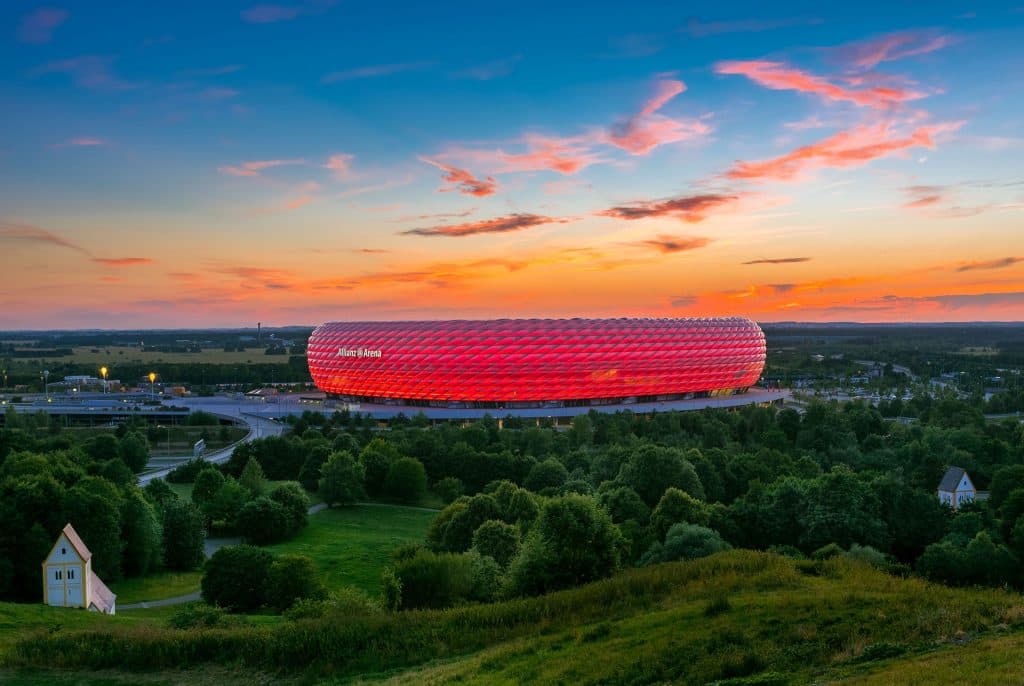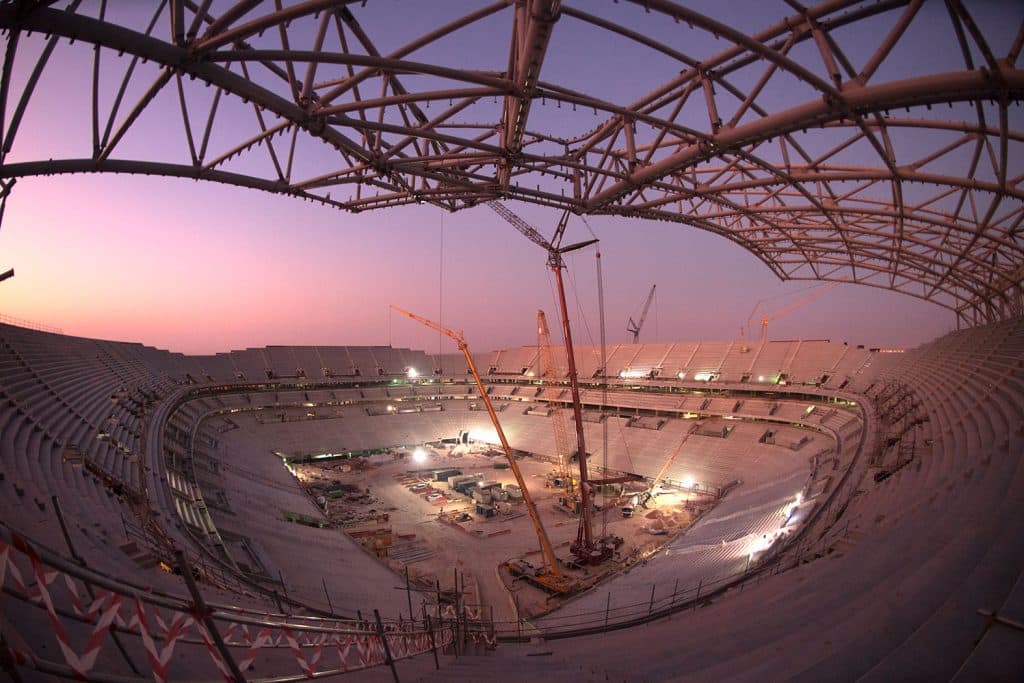
Modern, sustainable, adaptable to different uses besides sporting events, and, above all, usable not just for a match but any other event throughout the rest of the week.
The sports arenas of the future are complex infrastructures where sporting events become part of a wider choice of services ranging from entertainment to cultural events, from shopping to catering. And they are where environmental sustainability is central to the construction techniques, to energy consumption and to waste management.
These are modern stadiums, with a substantial economic impact on a sports team’s bottom line that can also benefit related businesses. In the United States, teams started looking at a new concept for their sports facilities as early as 2004. That year the Sport Marketing Quarterly, in a study commissioned by the National Football League companies, analysed the impact of a new stadium on a team’s revenues. The study showed that building a new stadium led to a rise in ticket sales of 54% and an increase in advertising revenue of 202%.
Since then, much has been done, both by private investors who have spent billions, and by the Fédération Internationale de Football Association (FIFA), football’s international governing body, which has set global guidelines for the stadiums of the future.
Sustainable stadiums
Modern stadiums must be sustainable. FIFA has drawn up a series of guidelines laid out last year in a report published ahead of the World Cup in Russia.
These guidelines say that sports infrastructures must have maximum energy efficiency; make the most of natural light to reduce consumption; use sustainable materials for construction, possibly coming from nearby; must save water; and have efficient waste management. In essence, they must be designed to meet the latest sustainability criteria.
The Al Bayt Stadium is a good example, built by Salini Impregilo for the 2022 World Cup to be hosted by Qatar. According to the calculations of the Supreme Committee for Delivery & Legacy (SCDL), a government body in Doha, Qatar will invest more than $10 billion in the construction of new stadiums for the World Cup. These include the Al Bayt Stadium in the city of Al Khor. It will hold 60,000 spectators and be a champion of sustainability, complying with the most stringent energy, efficiency and safety criteria. The stadium is designed to resemble a Bedouin tent, inspired by the concept of hospitality, and structured so that part of it can be converted into an hotel and shopping center once the World Cup is over. The highest rings can be dismantled and donated to developing nations that need sports infrastructure.
The Amsterdam Arena, the European precursor
Europe is certainly the continent where investments in new stadiums have been more substantial. The symbol of this new push is the Amsterdam Arena, where Ajax and the Dutch National team play, and where a host of different events are organised. Every year, some 70 events take place there, only 35% of which are football matches. It has been renamed the Johann Cruyff Arena.
Although the stadium is starting to show its years (construction ended in 1996), the Amsterdam Arena’s innovative spirit still survives. The structure was so popular that before its inauguration, it had already been visited by 180,000 people. Overall, the stadium cost €127 million and created 6,000 jobs. But above all, €800 million more was invested to redevelop the area adjacent to the stadium.
The Amsterdam Arena has provided the example for a new generation of stadiums in Europe, such as the Arsenal Emirates Stadium, inaugurated in 2006 costing £420 million (about €500 million), and the Allianz Arena in Munich, built for the 2006 World Cup at a cost of €346 million.

Tottenham and Moscow: the future of stadiums
Technology and multi-functionality: these are the features of the stadiums of the future, as demonstrated by two important examples of innovation.
The first is the new 61,000-seat, multi-use Tottenham Hotspur Stadium, which opened in April at a cost of £750 million. It offers heated seats, a glass tunnel under the stands to cheer the players before they enter the field, a scenic terrace on the roof, as well as special acoustics that transform the cries of the fans into a single choir.
Moscow’s VTB Arena is the legendary stadium that hosted the games of Dynamo Moscow. After the last match played in 2008, the stadium was demolished and completely rebuilt. The new arena boasts truly innovative features. It is fully multi-functional, designed to host football, ice hockey, volleyball, boxing, basketball and various types of shows.
Size is not its main asset: the football stadium can host “only” 26,000 spectators, while the total capacity for the ice rink is 14,000. But the innovation is baked into the architectural design, because the large structure manages to hold everything on three levels: at the top are the stadiums, while the lower levels host respectively a large shopping centre and parking lots.
Italy lags behind
According to the Federazione Italiana Giuoco Calcio (FICG), or Italian football federation, 159 new stadiums have been built in Europe over the past 10 years. The most active countries are Russia, England, France, Spain and Germany, but also Poland and Turkey.
Italy has fallen behind, with only three stadiums built: the Juventus Allianz Stadium, which cost €155 million in 2011; the Dacia Arena in Udine, built with an investment of €30 million; and Frosinone’s Benito Stirpe, a small structure costing €20 million.
The average age of Italy’s football facilities has therefore reached 63 years, and just eight Serie A facilities have fully covered stands.
So, many football clubs want to renovate their facilities. The most important project belongs to AS Roma, one of Rome’s two football teams. The approved plan involves the construction of a new stadium with 53,000 seats (17,000 less than the Olympic stadium, where matches are played today). The new Colosseum-inspired stadium however will be ultra-modern, technological and equipped with typical retail structures found in new stadiums around the world.
In Milan, the plan is to build a new stadium to replace San Siro, inaugurated in 1926 but renovated since then, which would be demolished at the expense of the Milan and Inter football clubs. According to the projects presented, the cost for the new stadium is seen at around €600 million, which is lower than the amount needed to completely renovate San Siro.
In general, the investments would be substantial, but worth it. According to research carried out by the football consultancy firm StageUp, the construction of new stadiums in Italy would guarantee investments of €4 billion over the next 10 years, creating 85,000 jobs and increasing the overall turnover of the Serie A by 25%.

